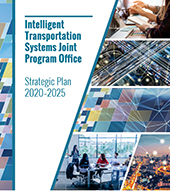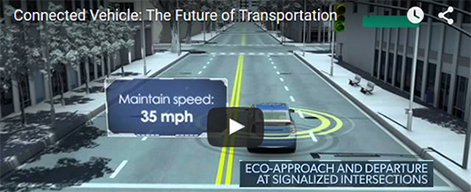News & Information
Upcoming Webinar on ITS Maritime Administration's Truck Staging Program
The U.S. Department of Transportation is hosting a webinar on the ITS Maritime Administration (MARAD) Truck Staging Program. The webinar is scheduled for Wednesday, March 20, 2019, from 1:00 PM ET to 2:30 PM ET.
BACKGROUND
Many marine ports are experiencing increasing landside congestion issues inside and outside their facilities due to larger ships calling on the ports and increased cargo volumes. The growing congestion, which is having an impact on trucks serving the ports as well as the ports themselves, is pushing both public agencies and private organizations to examine operational improvements to address the issue. MARAD, the Intelligent Transportation Systems (ITS) Joint Program Office (JPO), the Federal Highway Administration (FHWA), and the Federal Motor Carrier Safety Administration (FMCSA) are collaborating to address the port congestion challenges by evaluating potential ITS benefits via automation and increased connectivity. This effort furthers the two key ITS Program priorities outlined in the ITS Strategic Plan 2015-2019 -- realizing connected vehicle implementation and advancing automation.
The ITS MARAD Truck Staging Study is intended to establish the foundation for the long-term development and demonstration of port truck staging concepts. The program will improve the safety, access, reliability, and readiness of port facilities through advanced technologies and techniques to increase the reliability and efficiencies of truck movements. The overarching research objectives are "to determine the state of the practice regarding truck staging, including access, queuing, and parking, at maritime ports; to identify port operators' and trucking industry needs; and to perform an economic feasibility study of automated truck queuing as a technology solution."
The study includes two economic feasibility analyses. The first is a high-level evaluation of the economic feasibility for the future deployment of port staging technologies at port facilities, including technologies and partnerships between port authorities and commercial freight companies and operators. The second economic feasibility analysis addresses increased productivity through automated port queuing. It includes the technology concept of an automated slow-speed, in-queue truck application that meets the standards of Level 4 as defined in the Society of Automotive Engineers (SAE) J3016 (Levels of Driving Automation) standard. In this configuration, the driving system can fully operate a truck in queue and within a port terminal while the operator would exit the cab and assume an hours-of-service status of "On Duty, Not Driving." When the truck is loaded or unloaded, the driver would be notified, re-enter the vehicle, change his or her operating status to "On Duty, Driving," and leave the port.
WEBINAR DETAILS
This webinar will discuss the study's findings and provide a port perspective on addressing truck staging needs. It will include the following presentations:
ITS MARAD Truck Staging Program Overview: This presentation will review the ITS MARAD Truck Staging Program and talk about how some of the study's findings can be implemented.
ITS MARAD Truck Staging Program Stakeholder Outreach Efforts: This presentation will discuss the ITS MARAD Truck Staging Program industry outreach efforts, particularly to ports and truck carriers.
Port Perspective on the Potential Benefits of the ITS MARAD Truck Staging Program: This presentation will examine a port authority's perspective on addressing terminal congestion issues through increasing utilization of Intelligent Transportation System technologies, including automated truck solutions.
This webinar is free and open to the public.
SUMMARY
Title: Talking Freight: ITS MARAD Truck Staging Program
Date: Wednesday, March 20, 2019
Time: 1:00 PM ET to 2:30 PM ET
Registration: Register here!










